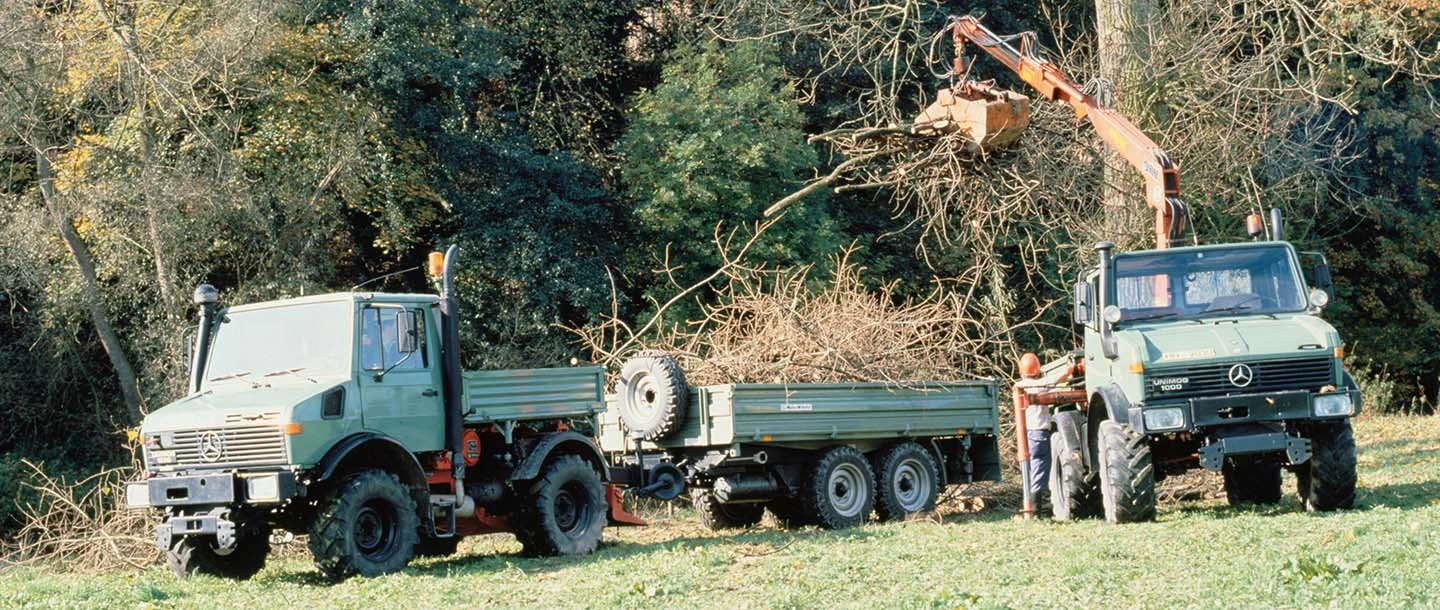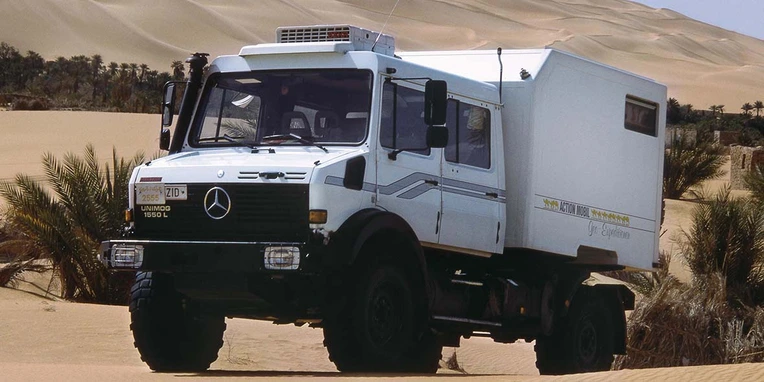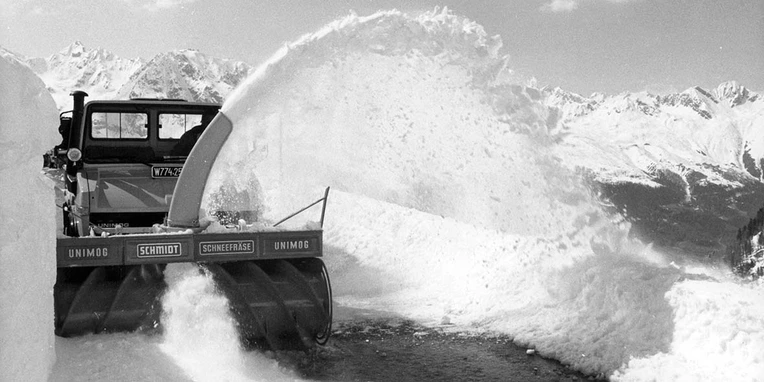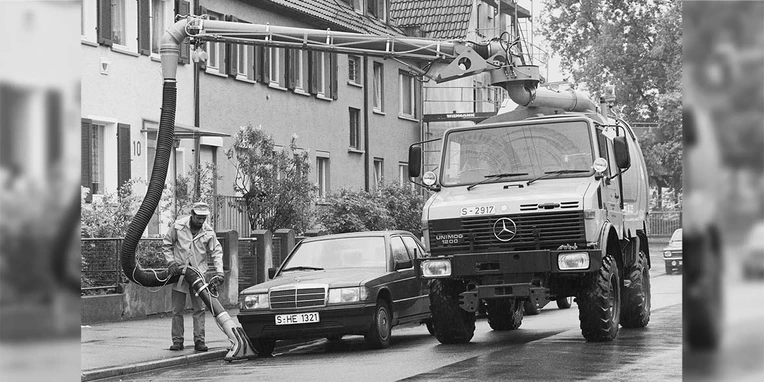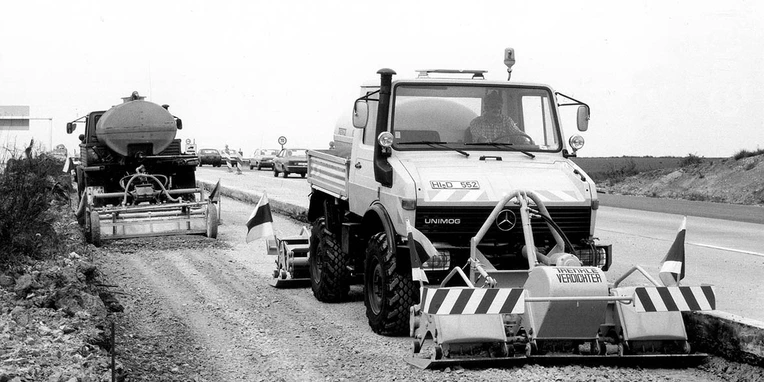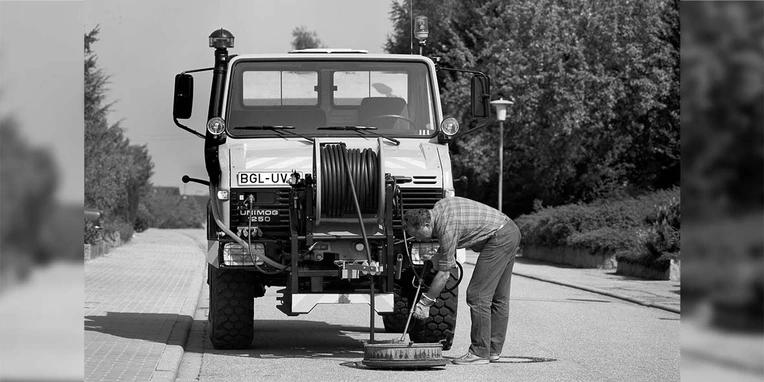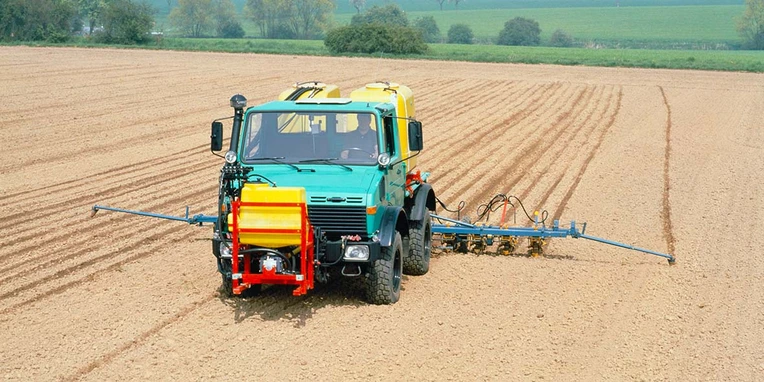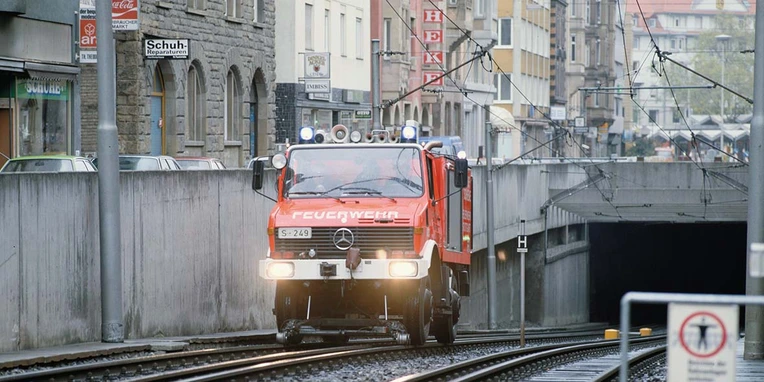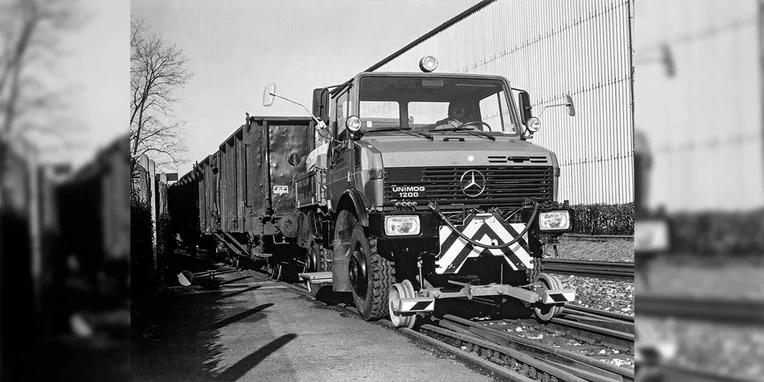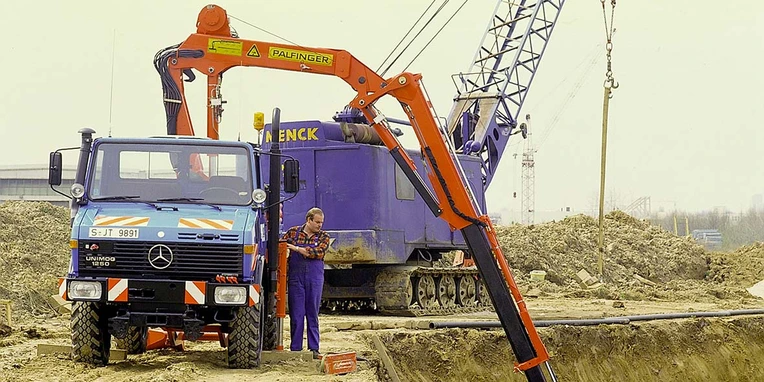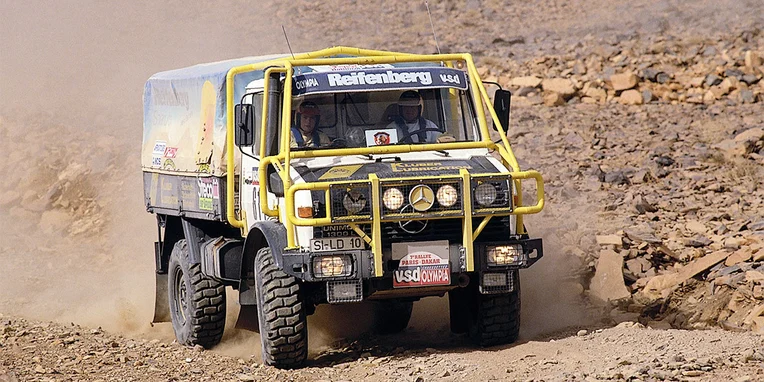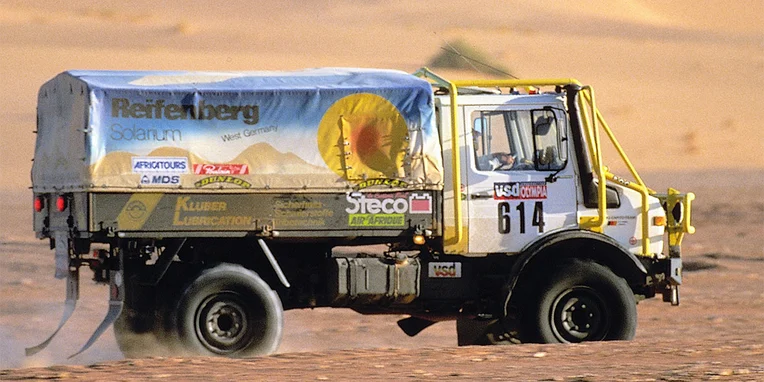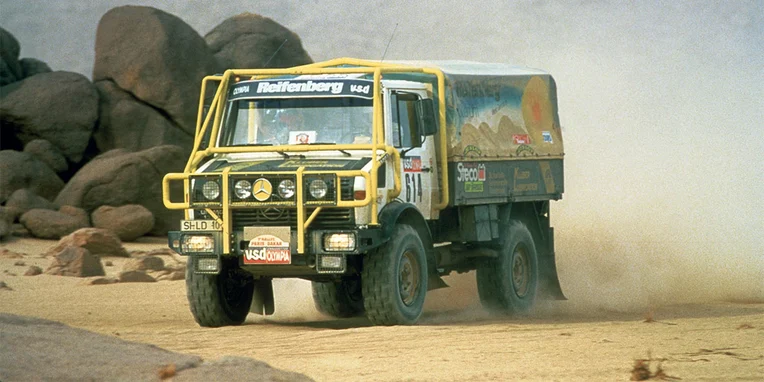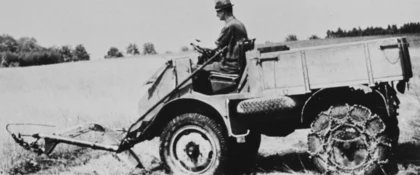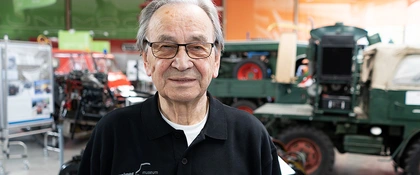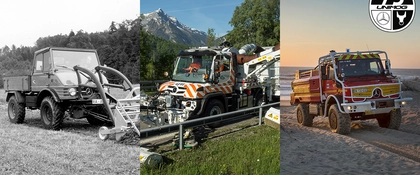1976–1985 | Continuation of heavy-duty Unimog model series and rally successes.
The successful story of the Unimog began 75 years ago. A good opportunity to look back at the allrounder’s milestones and key developments. This part of the series is devoted to the fourth decade from the mid-1970s, which brought some new model series and further developments.
New models with a rough-and-ready profile.
In 1976 Daimler-Benz AG celebrated the 25th anniversary of the Unimog with the star on the bonnet. Nearly 200,000 vehicles had been produced since the start of production in Gaggenau. In September of the same year the new 424 model series, also known as the "heavy-duty model series" was launched with the U 1000. Its unmistakeable hallmark: the distinctive side protrusions on the bonnet, underlining the boxy appearance of the hugely popular model series – particularly with towns and municipalities. Outside of Europe, too, the Unimog continued to prove very popular, for example for special applications in development aid as a mobile medical practice.
In total, by the end of the 1980s eight models with a different engine output were developed within model series 424 and 425 – from 95 hp to 150 hp. But the crowning glory when it came to performance was achieved by the U 1700 L from model series 435, whose 6-cylinder engine with an exhaust gas turbocharger boasted no less than 168 hp and thus had a payload of up to 5 t. Perfect for especially high-power tasks in agriculture and forestry.
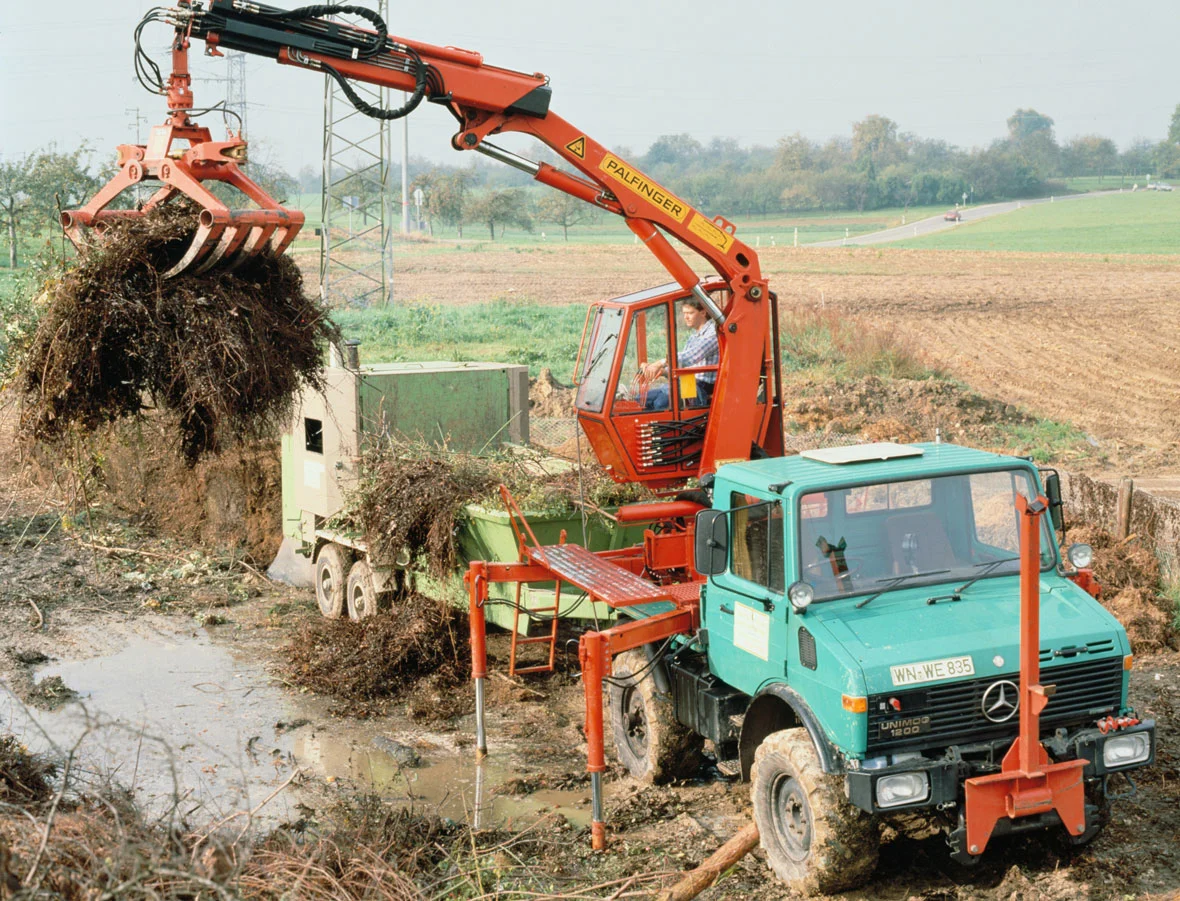
Model series 435 with a crewcab.
The 435 model series, with 30,726 units built, was the most successful "heavy-duty model series" and was shaped to a large extent by the U 1300 L, which is still optimally suited to hobby conversions to this day. The long wheelbase of 3250 mm is the main feature differentiating it from the 425 model series.
Alongside the high-performance U 1700 L, as of 1983 the all-terrain U 1300 L was given spacious crewcabs from the manufacturer Wackenhut from Nagold. These cabs, particularly popular for expeditions and research trips, offered room for up to 7 people in the cab. Most of the specially equipped Unimog models were used in the construction trade and industry.
